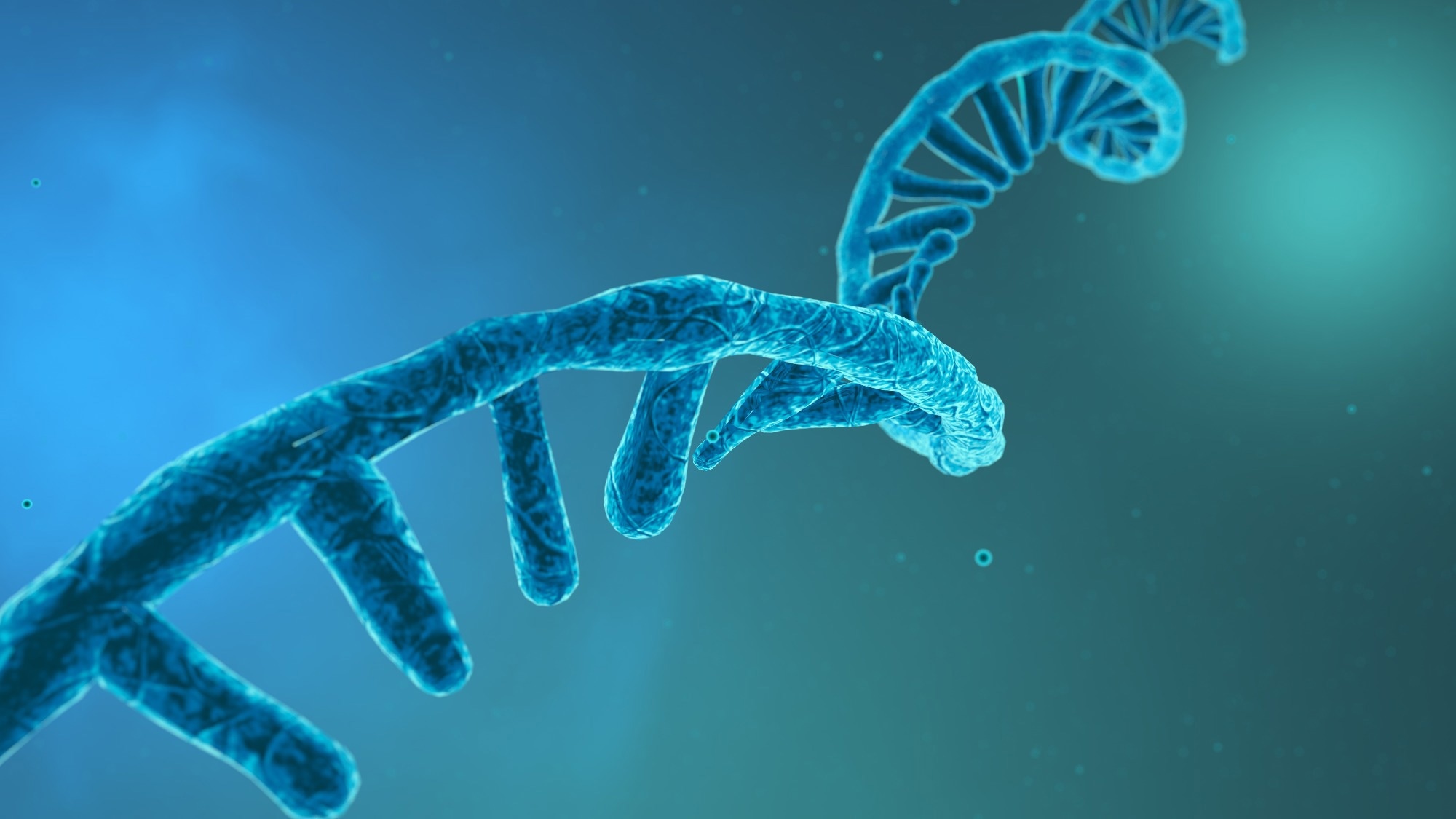In a recent study published in Scientific Reports, a group of researchers investigated single-molecule electrical detection of ribonucleic acid (RNA) cancer biomarkers, demonstrating high sensitivity and specificity in distinguishing mutants and paving the way for developing miniaturized electrical biosensors for cancer screening.
 Study: Electrical detection of RNA cancer biomarkers at the single-molecule level. Image Credit: CROCOTHERY/Shutterstock.com
Study: Electrical detection of RNA cancer biomarkers at the single-molecule level. Image Credit: CROCOTHERY/Shutterstock.com
Background
Cancer, a leading cause of death with an estimated 10 million fatalities in 2020, continues to rise in prevalence in the human population. Early detection through non-invasive liquid biopsies can potentially reduce mortality rates by identifying cancer-specific biomarkers such as circulating tumor nucleic acids (ctNAs).
However, detection is challenging due to their low concentrations and mutation frequency. The scanning tunneling microscopic (STM)-assisted break junction method (STMBJ) holds promise for addressing this, enabling single-molecule detection and identification of RNA.
About the study
In this study, the authors selected Kirsten rat sarcoma (KRAS) mutations as potential cancer biomarkers. The KRAS Exon 2 sequence was provided by collaborators from UMass Medical School. From this sequence, they identified two oligonucleotide sequences as deoxyribonucleic acid (DNA) probes, which contained G12C and G12V mutations, with the mutated base situated in the center of each sequence.
The DNA probes were evaluated with integrated DNA technologies (IDT) Oligo Analyzer and the national center for biotechnology information (NCBI) basic local alignment search tool (BLAST) to check for specificities and secondary structures. The DNA probes and corresponding RNA targets were synthesized by Biosynthesis Inc. (USA), and thermal hybridization was performed to form DNA:RNA hybrids in phosphate buffer.
Stringent cleaning protocols were followed to prepare glassware and Teflon cells, including the use of a piranha solution. Gold wire loops were used as electrodes in the electropolishing of an Au single crystal, which served as the substrate. A phosphate buffer was used for all experiments, with various chemicals sourced from Sigma-Aldrich.
STM-BJ measurements were performed at room temperature using a Pico-STM Molecular Imaging head and a Digital Instruments Nanoscope IIIa controller. Thiol groups in the DNA probes were reduced by Tris (2-carboxyethyl) phosphine (TCEP) for conductance measurements, while the STM tip was created from a gold wire and coated with Apiezon wax.
The STM-BJ method was used to form a gap between the gold substrate and STM tip, which was bridged by a molecule. A customized LabVIEW program was used to control the STM tip and analyze the data. A semi-logarithmic conductance histogram was generated to represent the most probable conductance of the specific molecular junction. The statistical analysis was rigorous, with only 1.5% of initial data traces showing clear steps being selected for final analysis.
Study results
In the present study, the researchers had chosen KRAS Exon 2, comparing the wild-type sequence to the G12C and G12V mutations. The balance of sequence length was pivotal for single-molecule electrical conductance applications; it was found that shorter sequences resulted in higher conductance (enhanced signal-to-noise ratio), but a certain minimum length was necessary to ensure specificity for KRAS.
With the assistance of the NCBI blast tool, alignments of prospective sequences ranging from 20–10 bases were carried out, determining the optimal short sequences which retained specificity to be 18 bases long.
Various bioinformatic tools were used for sequence analysis, determining guanine-cytosine (GC) percentage, melting temperature, and potential secondary structures with the assistance of the IDT Oligo Analyzer tool. The chosen sequences demonstrated high melting temperatures and did not form significant secondary structures at room temperature.
The STMBJ method was employed to measure the charge transport conductance values in individual KRAS G12V and G12C RNA molecules by creating single-molecule junctions in a nanogap between STM electrodes. DNA probes, modified with thiol groups at both the 3’ and 5’ ends, were used to bind to the electrodes as well as hybridize with the target complementary RNA sequence, thus closing the biomolecular electronics circuit and generating a specific conductance step.
When no bound molecules were present, "steps" were not observed between the two electrodes, but they were noticeable when a single molecule was bound. After collecting thousands of conductance traces, a conductance histogram was created using curves with steps to identify the average conductance value for the specific sequence.
The results presented the first single-molecule measurement of a human RNA sequence and the first attempt at electrical detection of individual cancer biomarker molecules. From a biosensing perspective, this implied that single-molecule conductance from a carefully designed DNA probe to capture a nucleic acid biomarker could distinguish a cancer biomarker molecule from the equivalent wild-type “healthy” sequence that differed by just a single base with a fourfold separation between the signals.
This single-molecule biosensing method was further examined by trying to detect both sequences simultaneously in situ, since in liquid biopsy samples, both mutant and wild-type KRAS sequences would be present in the solution.
Having demonstrated the potential for electrical detection of individual cancer biomarkers, in situ hybridization experiments were conducted in the presence of wild-type and mutant RNA sequences to test the specificity of this biosensing method further. Sensitivity was evaluated by performing titration experiments on KRAS G12C in order to determine the limit of detection (LOD) of the system.
Concentrations ranging from 6 zM (zepto molar, 10−21 M) to 300 μM were tested for the 18-base pairs KRAS G12C exact match DNA:RNA hybrids. The LOD, defined as the minimum target concentration that yields a signal-to-noise ratio (SNR) of at least 3, was effectively an individual molecule.